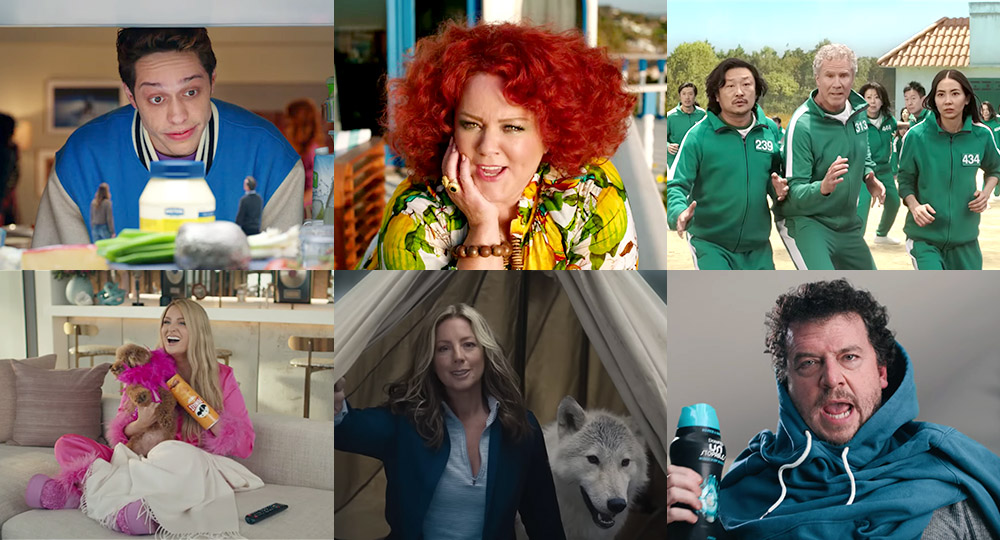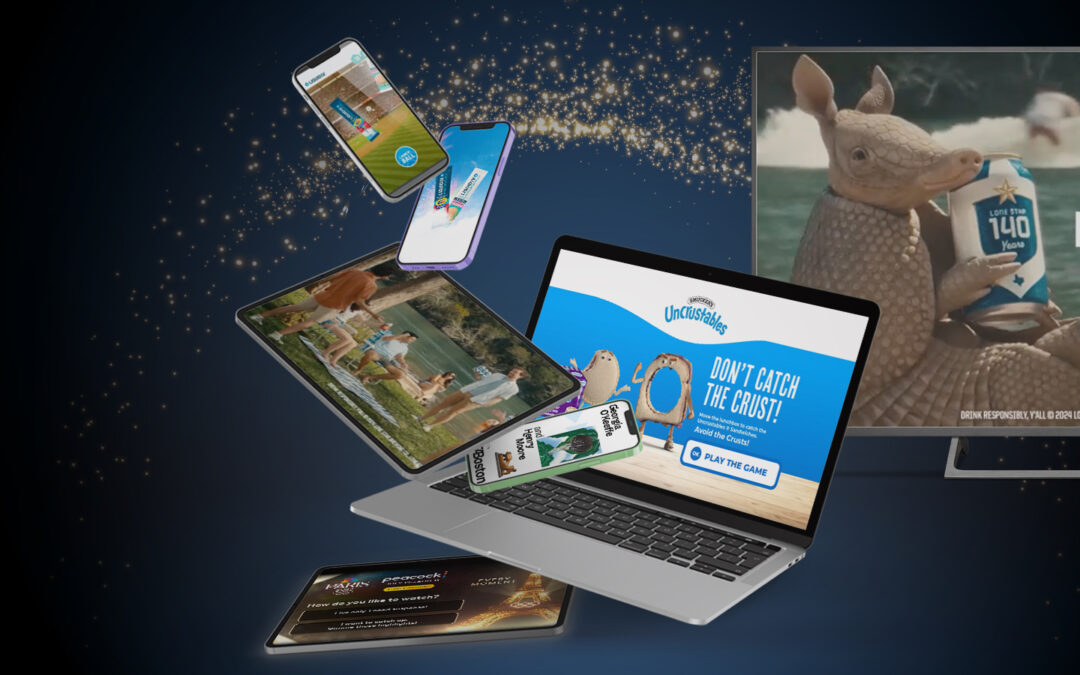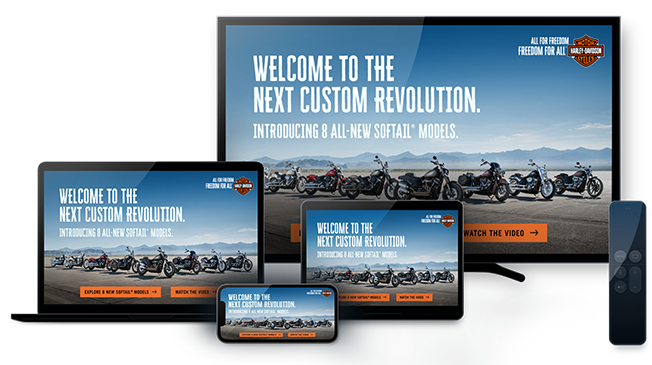Super Bowl LVII Ads and the State of “Watercooler” Content

A viral tweet last month made the tongue-in-cheek observation that “the fact there hasn’t been any new internet famous cat for the last couple of years is a sign of the oncoming apocalypse.” Maybe not the apocalypse, but it is a sign that any pop culture sensations have a tougher time sticking around. TikTok sea shanties were a phenomenon for a hot minute in 2020, but if you put a reference to them in a TV show just three years later, you’d get a lot of confused reactions from viewers. The explosion of on-demand streaming content and fragmentation of niche online communities made it tough enough for “watercooler content” – the kind with universal appeal that it seems like everyone was familiar with – to persist in the digital age. The speed of culture just makes it even tougher.
This is a challenge for brand advertisers too, not just the creators of entertainment content. And that challenge is best encapsulated as they figure out how to reach consumers at what is, perhaps, the biggest remaining vestige of true watercooler content in the U.S.: The Super Bowl. After all, memorable ads often tap into cultural phenomena that audiences can identify with. What does that mean when you’re trying to reach viewers across generations, interests, and demographics?
The brands that ran commercials in Sunday night’s Super Bowl LVII can teach the advertising world a thing or two about how to – or how not to – reach broad audiences in a fragmented world. Here are a few observations we took note of.
Tie in Diverse Cultural Touchstones – But Don’t Go Overboard
Being able to reach different demographics at once is an obvious boon for advertisers. But it’s tough with the extent to which culture has become fragmented in the social media age. The way that many Super Bowl advertisers have chosen to address this in recent years is by appealing to multiple corners of pop culture’s history within a single ad – and for many advertisers, this amounted to enlisting celebrities who could individually appeal to different demographics, generations, or interest groups. Nostalgia sells, after all. So, theoretically, anyone watching the ad would find something to identify with and ideally then associate with the brand.
Uber One’s ad, which depicted rapper Diddy being “enlisted” to audition other musicians for a hypothetical corporate jingle, brought in a diverse roster of one-hit wonder acts, most of whom were from the ‘90s and would be at least somewhat familiar to Gen-X and older millennial audiences. But what seemed to get the most pronounced reaction was the appearance of the Norwegian pop band Ylvis, who were a brief viral sensation in 2013 with their bizarre novelty song “What Does The Fox Say.” That one seemed to hook a younger viewership. (There were a lot of “I haven’t thought about that song since high school” reactions on Twitter.) But surprise throwback appearances can ultimately be more memorable than the actual advertiser, and time will tell whether viewers ultimately remember what brand enlisted the guys in the fox costumes for a Super Bowl ad.
Another challenge evident in some ads is that the strategy to cast a wide net to audiences by hiring decades’ worth of celebrity guests can turn into overkill, with the ad becoming a set of split-second cameos and little space for the brand (or the point of the ad) to shine. An ad with more big-name cast members than the latest installment of the Marvel Cinematic Universe can easily get clunky and tedious. Yet other ads seemed like they could stand on their own even without celebrity participation. “Pixel didn’t really need to bring celebs into this to make it good,” 72andSunny associate creative director Aisha Hakim tweeted about the Google Pixel ad that showed awkward photobombs getting edited out of otherwise frame-worthy photos. But either way it was a great, memorable ad for the smartphone that centers on one specific (and useful) capability, and (as some replies to Hakim’s tweet pointed out) the presence of Doja Cat, Amy Schumer, and more didn’t degrade from its quality.
But the strategy of bringing in celebrities to give an ad multigenerational appeal worked best when the presence of the celebrities was actually key to the ad. Cloud services company Workday’s ad poked fun at the use of the term “rock star” in corporate environments, bringing out a slew of classic rockers like Ozzy Osbourne and Joan Jett (and, to reach the millennials in the audience, Gary Clark Jr.) to explain what it meant to be an actual rock star. The ad was well-received by real-time critics, and here’s a theory why – it actually made sense for the celebrities in question to be in the ad. It wasn’t celebrity for the sake of celebrity.
In short: A great ad can feature celebrities (including long-forgotten ones) and a bevy of nostalgia pop culture references. But those aren’t what make the ad great. Solid writing, direction, and strategy are what matter more.
Don’t Be Afraid to Get a Little Weird
In an ad break during the fourth period of the game, viewers were taken aback when the channel appeared to change to a generic connected TV user interface, causing (according to Twitter) many to scramble for the remote assuming someone had accidentally sat on it or that their TV was accidentally picking up the neighbors’ streaming feed.
As it turns out, it was an ad for streaming content platform Tubi. (One might say it was this year’s equivalent of 2022’s Coinbase ad that just featured a QR code bouncing around the screen like an old Windows screensaver.) And it was the second shamelessly weird ad on behalf of Tubi; earlier in the game, they’d run an ad that appeared to consist of nothing but people being kidnapped by giant rabbits. The ad’s tagline, revealed at the end, was that Tubi’s extensive library of content can send viewers down any number of “rabbit holes.” Strange? Absolutely. And according to reactions on Twitter, the ad that faked a CTV interface was more than a bit polarizing. But they certainly pushed Tubi’s brand awareness along. (The “Rabbit Holes” ad won the Clio Awards’ annual “Super Clio” honor for the best Super Bowl ad.)
A few other advertisers turned to the offbeat for memorable ads. The ad for General Motors’ forthcoming Ram electric pickup truck mocked cliches from decades of men’s health medication commercials, offering a solution to “premature electrification.” It was a sly nod to a very real challenge facing electric cars’ perception of not being powerful or long-lasting enough, and it also seemed to go over well even if the truck won’t hit the market for over a year. “They went for humor and originality, not celebrity and nostalgia,” Brand Innovators’ David Teicher tweeted. Nostalgia’s an easy way to create advertising appeal that spans generations (as we discussed above), but so is building something so creative and unusual that people can’t help but talk about it.
Get to the Heart of Your Brand and Stick to It
But sometimes the reverse is true: Rather than giving it a weird, edgy new spin, a brand can win with marketing that gets back to the reason people love it. This was the first year that Apple Music was the sponsor of the Super Bowl halftime show, taking over from longtime brand partner Pepsi. And if you were looking closely, you could see Apple’s brand ethos at work. Gone were the (pre-selected) fans on the field, the cameos from other artists, and the dancing sharks. Instead, Rihanna was the sole performer, wearing a single shade of red and surrounded by neat lines of backup dancers wearing all white. It was a futuristic, visually stunning performance that echoed what consumers love about Apple – minimalistic, uncluttered, and aesthetically savvy products and interfaces.
Sometimes staying true to your brand’s core appeal involves taking some risks. YouTube TV’s brief Super Bowl spot for its new NFL Sunday Ticket programming featured no actual football. Instead, it consisted exclusively of “Keyboard Cat,” an early internet video sensation, appearing to play the Sunday Ticket theme music. This wasn’t necessarily a reference that every viewer would understand, especially those on either side of younger Gen-X and elder millennials. (“Feeling so old because I get the Keyboard Cat reference,” tweeted marketing exec David Berkowitz.)
But even if not everyone knows Keyboard Cat, they likely do know that grainy cat videos were what made YouTube famous. So, in addition to an insidery nod to YouTube’s trajectory from amateur video hub to major player in OTT content – including live sports – the ad encapsulated the essence of what YouTube was when it went initially mainstream.
And it unsurprisingly went over well. “YouTube TV has already won the commercials with Keyboard Cat,” tweeted Barstool Sports’ Steven Cheah. Perhaps the best kind of wide-appealing Super Bowl ad nostalgia is the kind that reminds audiences why they loved a particular brand in the first place.
What We Didn’t See? Interactivity
There’s no better way for a brand to reach wide, diverse audiences at once than to give them diverse ways to experience the brand – like on the platforms of their choice. Here’s an example: Gen-Z marketing guru Casey Lewis pointed out before the game that while Gen-Z isn’t really into live sports in general, they do watch the Super Bowl, and so the few ads that were targeting that audience incorporated plenty of nods to viral TikTok culture that likely went right over older viewers’ heads. But Lewis also pointed out that other brands looking to target Gen-Z sat out the Super Bowl entirely. That’s a shame, because there are plenty of opportunities to turn a Super Bowl ad into a multichannel, multigenerational experience through interactivity.
Nobody in the ad industry has to be reminded that a Super Bowl spot is expensive. According to Digiday, the $7 million price tag of a Super Bowl ad could generate a massive number of impressions on other ad-supported platforms, from TikTok (1.64 billion) to Netflix (127.2 million). But even without that much media spend on other platforms, a truly effective Super Bowl ad today needs to be the centerpiece of a bigger, multichannel effort. As M.T. Fletcher wrote this week in Ad Age, “People don’t remember ads unless they’re part of a campaign.”
Was this obvious during the game? Not really. Ad industry insiders and social media gurus were likely to have known about some of the pre-game teases and tie-ins on platforms like Twitter and YouTube, but the general public could easily have missed them. Lofty plans to incorporate generative AI tech into ads didn’t pan out. And in-game calls to action that could bring the ad’s experience to another platform were sparse during Super Bowl LXVII. After last year’s Coinbase sensation, QR codes (the most obvious way to turn a video ad into a multiscreen experience) popped up in a few ads, but not many.
The good news for advertisers? That means there’s still a lot of unexplored territory for multiplatform creativity. Our culture might never get true “watercooler” moments back, but brands can take advantage of cutting-edge creative tech to bridge the gaps between generations and demographics. No ensemble cast of celebrity ambassadors required.
How do you turn the creative of a Super Bowl ad into a wide-ranging interactive campaign that can keep up momentum long after the Big Game? Infillion’s Creative Studio has a few ideas. Follow Infillion on LinkedIn to see what they’re up to.
Subscribe to our blog:
Related Posts:

The Coolest Ads We Built In 2024
2024 was a year of continuous innovation at Infillion. Our work ran the gamut from boutique ads designed for live, in-person audiences, to streamlined ad experiences built for broad consumption and easy production. In short: it was a year full of work of which we’re...

Infillion’s Top Ad Tech Predictions for 2025
2024 has been a year of immense change and growth in the ad tech industry. The buzzword on everyone’s lips – again – has been artificial intelligence, and brands have been hard at work figuring out how to operate in a cookieless future even though Google backtracked...

Your Customers Want Gift Cards for the Holidays. Why Not Advertise Them?
When was the last time you saw a major retailer advertising gift cards as a great holiday present? You probably had to think about that one. Giving someone a gift card for Christmas or Hanukkah, after all, is seen as a cop-out or even a social faux-pas. Plus, gift...
Let's Connect
We can help you create the personalized ad experiences viewers expect.

